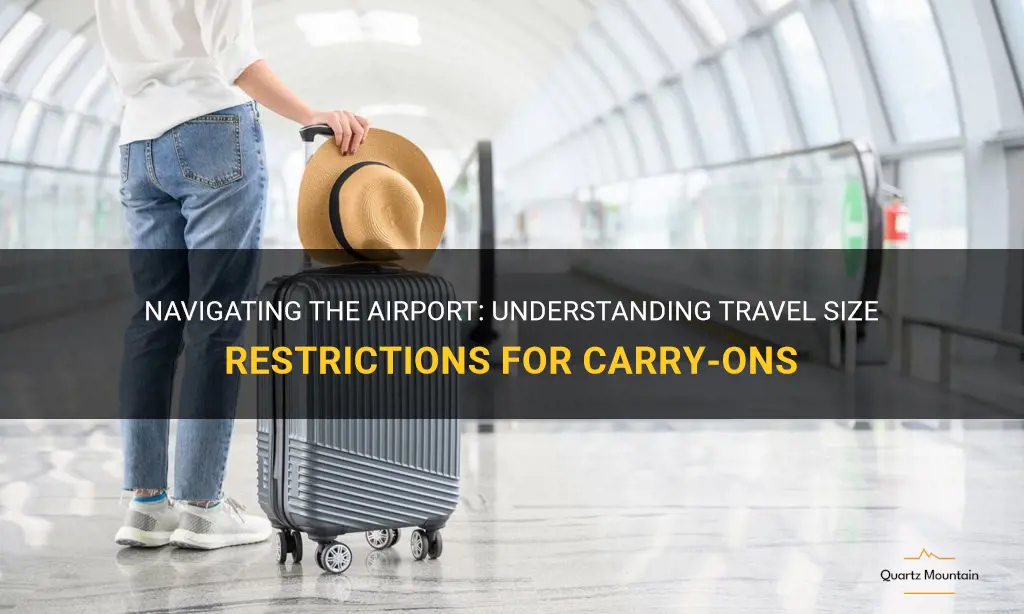
Airport travel size restrictions are a necessary measure put in place to ensure the safety and security of air travel. These restrictions effectively limit the amount and size of liquids, gels, and aerosols that passengers can carry on board a plane. While it may seem like a hassle to comply with these restrictions, they play a crucial role in maintaining the integrity of aviation security. In this article, we will explore the reasons behind these restrictions, as well as provide some practical tips on how to navigate them effectively. So, next time you find yourself at the airport, you'll be well-prepared to breeze through security with your travel-sized essentials in tow.
| Characteristics | Values |
|---|---|
| Checked Baggage Size Limit | Height + width + depth must be less than 62 inches / 157 cm |
| Carry-on Baggage Size Limit | Height + width + depth must be less than 45 inches / 115 cm |
| Weight Limit for Checked Baggage | Varies by airline, typically between 50 - 70 pounds / 23 - 32 kg |
| Weight Limit for Carry-on Baggage | Varies by airline, typically between 15 - 40 pounds / 7 - 18 kg |
| Liquid Restrictions | Liquids must be in containers of 3.4 ounces / 100 milliliters or less, and all containers must fit in a clear, quart-sized plastic bag. Each passenger can only carry one bag of liquids |
| Prohibited Items | Sharp objects, firearms, explosives, flammable items, and other dangerous or illegal items are prohibited |
| Electronic Device Restrictions | Electronic devices such as laptops, tablets, and smartphones must be removed from bags and placed in a separate bin for screening |
| Personal Item Size Limit | Varies by airline, but typically must fit under the seat in front of you |
What You'll Learn
- What are the current airport travel size restrictions for liquids and gels in carry-on luggage?
- Are there any exceptions to the airport travel size restrictions for medical or essential items?
- How strictly are the airport travel size restrictions enforced by airport security?
- Can I bring larger sizes of liquids and gels in my checked luggage?
- Are there any specific restrictions on specific items that may not be obvious, such as electronics or food?

What are the current airport travel size restrictions for liquids and gels in carry-on luggage?
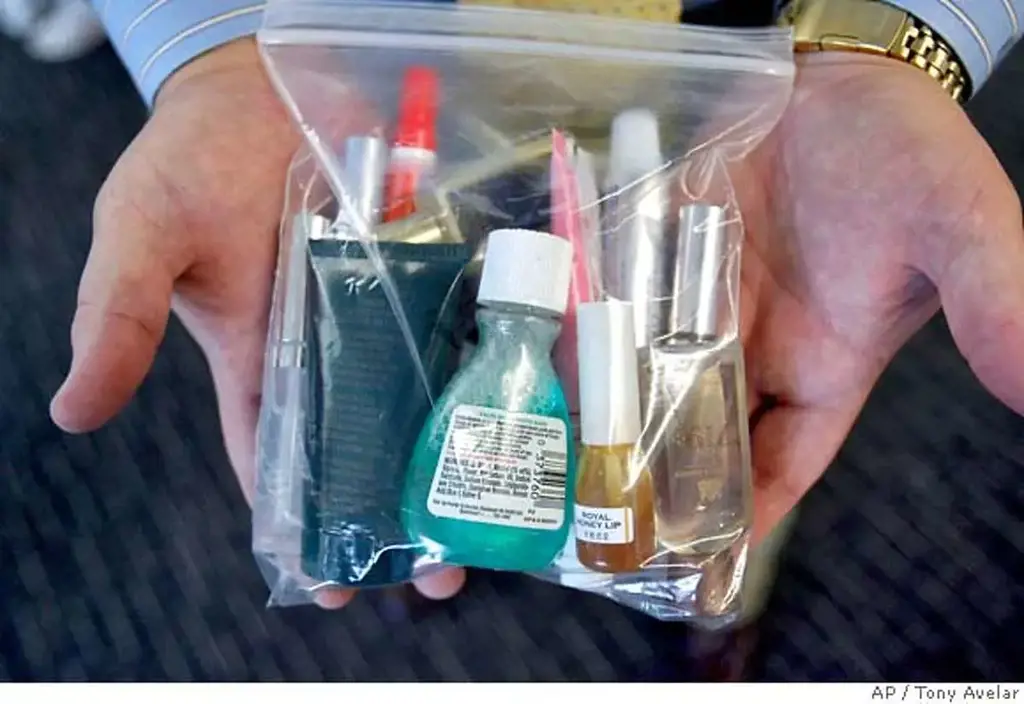
Airport travel size restrictions for liquids and gels in carry-on luggage can vary depending on the country and airport you are traveling from. However, there are some general guidelines that are followed by most airports worldwide.
The most commonly followed rule is the 3-1-1 rule. This means that each passenger is allowed to carry liquids and gels in containers that are 3.4 ounces (100 milliliters) or less. These containers must be placed in a clear, quart-sized plastic bag. Each passenger is allowed only one bag of liquids and gels.
The 3-1-1 rule applies to various types of liquids and gels including shampoo, conditioner, perfume, toothpaste, lotion, and other similar items. It is important to note that the total volume of liquid or gel in the plastic bag should not exceed one quart (1 liter).
Additionally, there are some exceptions to the 3-1-1 rule. Items such as medications, baby formula, and breast milk are allowed in larger quantities than 3.4 ounces (100 milliliters). However, these items may be subject to additional screening and may require additional documentation for verification.
It is always a good idea to check the specific regulations of the airport you are traveling from as well as the regulations of the country you are flying to. Some airports and countries may have stricter rules than the 3-1-1 rule. It is advisable to check the official website of the airport or contact the airline for the most up-to-date information on their liquid and gel restrictions.
In conclusion, the current airport travel size restrictions for liquids and gels in carry-on luggage generally follow the 3-1-1 rule, allowing passengers to carry containers of 3.4 ounces (100 milliliters) or less in a quart-sized plastic bag. However, it is important to check the regulations of the specific airport and country you are traveling to for any additional restrictions or exceptions.
Air France Travel Restrictions: What You Need to Know During the Pandemic
You may want to see also

Are there any exceptions to the airport travel size restrictions for medical or essential items?
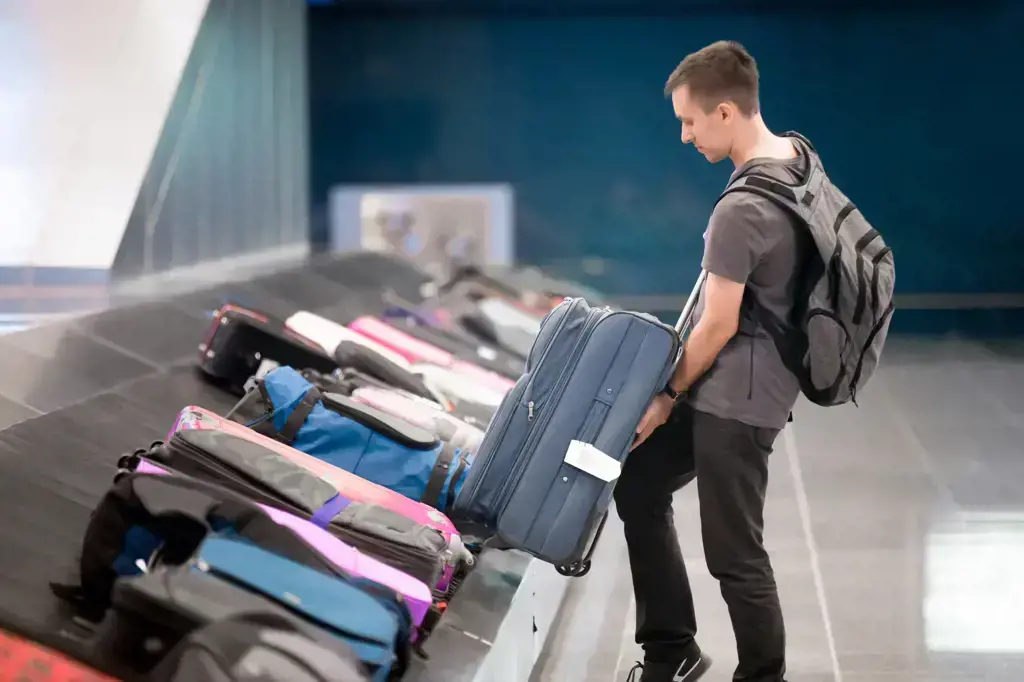
When it comes to air travel, there are strict regulations regarding the size and amount of liquids, gels, and aerosols that passengers can bring in their carry-on baggage. These regulations, commonly known as the 3-1-1 rule, state that all containers must be 3.4 ounces or less, all containers must fit in a single, clear, quart-sized plastic bag, and each passenger is limited to one such bag.
However, there are some exceptions to these rules for passengers who require medical or essential items. Airlines and airport security understand that some individuals have specific needs and may need to carry certain items in larger quantities or sizes.
Firstly, if you require any medically necessary liquids, gels, or aerosols, you should inform the airline in advance and have them properly documented. This includes items such as prescribed medications, over-the-counter medications, and medical supplies. You may be required to provide supporting documentation, such as a doctor's note or prescription, to prove the necessity of these items.
Additionally, if you require large quantities of medically necessary liquids, gels, or aerosols, you may be able to bring them in your carry-on baggage. In such cases, it is best to contact the airline directly to inquire about their specific policies and procedures. They may request additional information or provide instructions on how to pack and present these items at the security checkpoint.
It is important to note that items such as baby formula, breast milk, and juice for infants or toddlers are also exempt from the 3-1-1 rule. Parents traveling with infants or toddlers are allowed to bring the necessary quantities of these liquids, but they may be subject to additional screening by airport security.
In some cases, airports may have dedicated lanes or separate screening procedures for passengers with medical or essential items. This can help facilitate the process and ensure that individuals who require these items have a smoother travel experience.
It is always recommended to check the specific regulations and guidelines of the airline and airport you will be traveling with before your trip. This will ensure that you are aware of any exceptions or additional requirements for carrying medical or essential items. This information can usually be found on the airline's website or by contacting their customer service department.
In conclusion, there are exceptions to the airport travel size restrictions for medical or essential items. Passengers who require medically necessary liquids, gels, or aerosols may be allowed to carry them in larger quantities or sizes. It is important to inform the airline in advance, provide supporting documentation if required, and follow any specific procedures or guidelines provided by the airline and airport. By doing so, individuals with medical or essential needs can travel with the necessary items while still complying with security regulations.
Canada Eases Travel Restrictions: What It Means for Travelers
You may want to see also

How strictly are the airport travel size restrictions enforced by airport security?
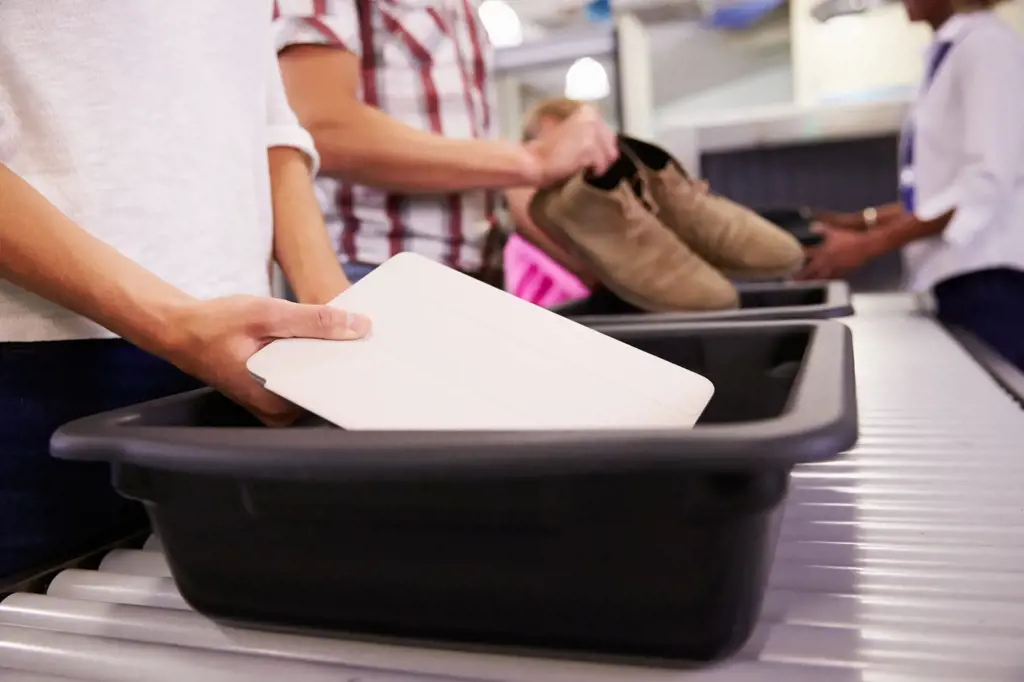
Airport travel size restrictions are put in place by airport security to ensure the safety of both passengers and crew members. These restrictions dictate the maximum size and quantity of liquids, gels, and aerosols that can be brought through security checkpoints in carry-on bags. But how strictly are these restrictions enforced?
To understand the level of enforcement, it's essential to discuss the guidelines set by the Transportation Security Administration (TSA), the agency responsible for security at U.S. airports. According to the TSA, passengers are allowed to bring liquids, gels, and aerosols in containers that do not exceed 3.4 ounces (100 milliliters) in a single, quart-sized, clear, plastic bag. Each passenger is limited to one plastic bag.
The TSA enforces these restrictions through the use of X-ray machines and manual inspections of carry-on bags. When passengers pass through the security checkpoint, they are required to remove their plastic bag containing liquids, gels, and aerosols from their carry-on bags and place it in a separate bin for screening. The X-ray machine can detect any items that exceed the size limit, and if an item is found, it may be subject to additional screening or confiscated.
In most cases, airport security personnel are diligent in enforcing these restrictions. They are trained to identify and address any prohibited items or items that exceed the size limit. While there may be some instances where a smaller item is overlooked, especially if it is well within the size limit, it is generally not advisable to try and deliberately bypass the rules. Security measures are in place for a reason, and attempting to bring larger quantities of liquids or prohibited items can lead to delays, fines, or even missed flights.
Furthermore, international airports may have their own regulations and enforcement procedures regarding travel size restrictions. It's important for travelers to educate themselves on the specific rules of their destination airport to avoid any issues during security checks.
It's worth noting that some travelers may have medical or special requirements that necessitate larger quantities of liquids, gels, or aerosols. In these cases, individuals are advised to contact the airline or airport ahead of time to inquire about any necessary documentation or accommodations.
In summary, airport travel size restrictions are enforced by security personnel to ensure the safety of air travel. While there may be instances where very small items are overlooked, it is generally not recommended to intentionally try to bypass these rules. Passengers should adhere to the guidelines set by the TSA and any additional rules implemented by international airports. By doing so, travelers can help maintain a smooth and efficient security screening process.
2021 Costa Rica Travel Restrictions from US: Everything You Need to Know
You may want to see also

Can I bring larger sizes of liquids and gels in my checked luggage?

When it comes to packing liquids and gels in your luggage, there can be some confusion on what is allowed. The Transportation Security Administration (TSA) has specific rules and regulations in place to ensure the safety of all passengers. One of the most commonly asked questions is whether you can bring larger sizes of liquids and gels in your checked luggage.
The answer to this question is both yes and no. According to the TSA's guidelines, you are allowed to pack larger sizes of liquids and gels in your checked luggage. However, there are some important factors to consider.
Firstly, it is important to note that the TSA's 3-1-1 rule still applies. This rule states that you are allowed to bring a quart-sized bag of liquids, aerosols, gels, creams, and pastes in your carry-on bag. Each individual container must be 3.4 ounces (100 milliliters) or less. This rule does not apply to checked luggage, so you are not limited to the 3.4-ounce container size in your checked bags.
While you can bring larger sizes of liquids and gels in your checked luggage, it is important to make sure that they are properly packaged to avoid any leaks or spills during transport. The TSA recommends placing all liquids and gels in a zip-top plastic bag or using leak-proof containers. This will help prevent any damage to your clothing or other items in your luggage.
It is also worth mentioning that some airlines may have their own restrictions on the size and amount of liquids and gels you can bring in your checked luggage. It is always a good idea to check with your specific airline before traveling to ensure that you are in compliance with their rules and regulations.
In conclusion, you can bring larger sizes of liquids and gels in your checked luggage. However, it is important to adhere to the TSA's 3-1-1 rule for carry-on bags and properly package any liquids or gels to avoid leakage. Additionally, be sure to check with your airline for any additional restrictions or guidelines they may have in place. By following these guidelines, you can ensure a smooth and hassle-free travel experience.
Understanding Ulster County Travel Restrictions: What you Need to Know
You may want to see also

Are there any specific restrictions on specific items that may not be obvious, such as electronics or food?
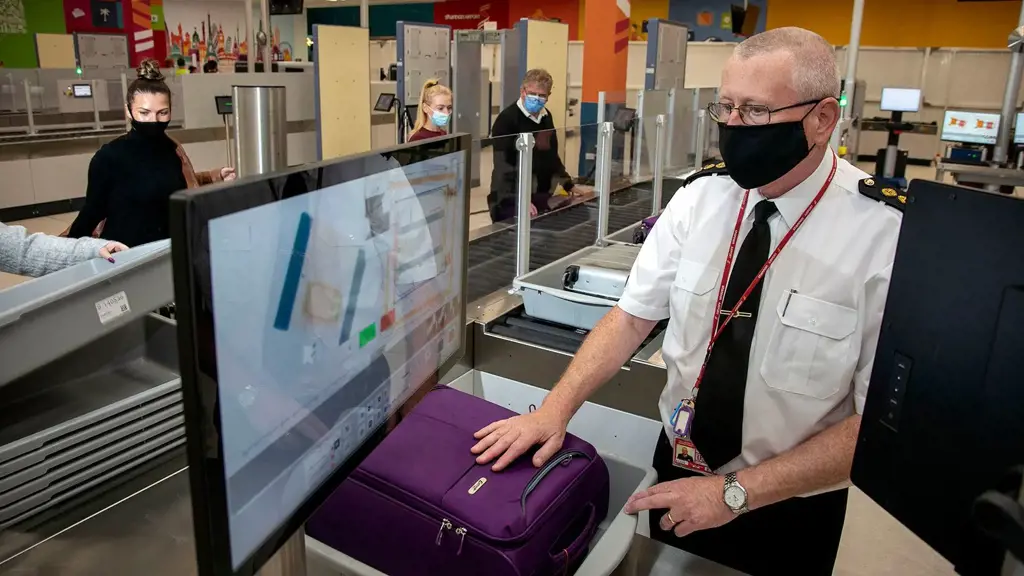
When it comes to traveling, there are often restrictions on what items you can bring with you, particularly when it comes to electronics and food. These restrictions may not always be obvious, so it's important to familiarize yourself with the regulations before you head to the airport.
Electronics are a common item that people travel with, but there are some limitations on what you can bring. Most airlines allow you to bring personal electronics such as smartphones, tablets, and laptops in your carry-on baggage. However, larger electronics such as gaming consoles or desktop computers may need to be packed in checked baggage. It's always a good idea to check with the specific airline you are flying with to ensure you understand their guidelines.
In addition to size restrictions, there are also restrictions on certain types of electronics due to safety concerns. For example, hoverboards and certain models of e-cigarettes or vaping devices may not be allowed in any baggage due to the risk of fire or explosion. It's important to check with your airline before bringing these items to the airport to avoid any issues.
When it comes to food, there are also restrictions that vary depending on the destination and the type of food you are carrying. In general, solid foods are allowed in both carry-on and checked baggage. However, there may be restrictions on bringing certain types of food into other countries due to agricultural concerns. For example, many countries have strict regulations on the import of fresh fruits, vegetables, and meat products. It's always a good idea to check the import regulations of your destination country and avoid bringing these items to avoid any potential fines or confiscation.
Liquids are another common item that may have restrictions when it comes to traveling. The general rule is that liquids must be in containers of 3.4 ounces (100 milliliters) or less and placed in a clear, plastic, quart-sized bag. Each passenger is allowed one bag of liquids in their carry-on baggage. This includes items such as shampoo, perfume, and mouthwash. Larger quantities of liquid should be packed in checked baggage.
It's important to note that there are some exceptions to these liquid restrictions. Medications, baby formula, and breast milk are allowed in larger quantities and are not required to be placed in the quart-sized bag. However, these items may still need to be inspected by airport security.
In conclusion, there are specific restrictions on certain items such as electronics and food when it comes to traveling. It's important to familiarize yourself with these regulations before you fly to avoid any issues at the airport. Make sure to check with your airline for any specific guidelines and research the import regulations of your destination country to ensure a smooth and hassle-free journey.
ABS-CBN Travel Restriction Update: What You Need to Know
You may want to see also
Frequently asked questions
Airport travel size restrictions refer to the limitations placed on the amount and size of liquids, gels, and aerosols that passengers can bring in their carry-on luggage when flying. These restrictions are in place to ensure security and prevent the possibility of liquid explosives being brought onto an aircraft.
The specific limitations for liquids and gels in carry-on luggage are that each container must be 3.4 ounces (100 milliliters) or less, and all containers must fit into a single quart-sized clear plastic bag. Each passenger is allowed only one bag of liquids, which must be easily accessible for inspection at the security checkpoint.
Yes, there are some exceptions to the airport travel size restrictions. Medications, baby formula, breast milk, and juice for infants or toddlers are allowed in reasonable quantities exceeding the 3.4 ounces limit, but they must be declared to security personnel at the checkpoint. Additionally, duty-free liquids purchased at the airport or on an international flight are allowed in larger quantities, as long as they are properly sealed in a secure, tamper-evident bag with the receipt.
If a passenger attempts to bring larger or non-compliant containers on board, they will likely be asked to surrender the items at the security checkpoint. It is important to follow the airport travel size restrictions to avoid delays and inconvenience. It is possible to pack larger containers of liquids and gels in checked luggage, as there are no size restrictions for these items.







